
Review on StarTech.com 2 Port Dual Monitor DisplayPort KVM Switch with USB 2.0 Hub, Audio, and Microphone - Black (SV231DPDDUA) by Larry Simpson

Lots of trial and error, but worth it
Traditionally, KVMs can be complex hardware. When they work, they work great. But when you have problems, they can be difficult to track down and solve. This Dual DisplayPort KVM is no different. My main computer has a graphics card with two DisplayPort outputs. That was the main reason I bought this particular KVM (rather than something more traditional like dual-DVI). Both of my monitors only have HDMI inputs, but when planning this I figured I could just use an active Displayport to HDMI converter. I did that and at least this conversion worked great. Unfortunately, the rest of the transformations I had planned didn't happen. When I started planning, it got more complicated. I need KVM so I can use my monitors, keyboard and mouse between my home PC and my work laptop. My work laptop only had HDMI and VGA output ports. At first I thought I could just use converters for this (there were tons of them on the market) but then my ignorance of cable converters bit me. Most converters are single-ended, namely DP -> HDMI or DP -> DVI/VGA. When I connected the converters nothing worked because I tried to convert in the opposite direction. After figuring out the flaw in my methods, I replaced several different transducers with a different set of transducers. Unfortunately, converters that worked in the opposite direction (converting to DP) were more limited, expensive and unfortunately very unreliable when running over KVM. The HDMI to DP converter I bought had a bad habit of stopping sending video as soon as I started working, but Windows still recognized it was plugged in and required a shutdown and reboot to recover to work again. The VGA-to-DP converter fixed the resolution at 800 x 600 (although it was advertised that it could go all the way up to Full HD). However, I've only encountered these issues when using it with KVM; When I bypassed the KVM and connected directly, they worked perfectly, so the problem was obviously how the KVM handled the converted signal. I eventually switched to using USB video adapters. I bought two USB3 to DisplayPort pluggable adapters. They worked well through KVM and I was actually able to use them successfully for an 8 hour session. Unfortunately, they weren't entirely flawless; One of my monitors got stuck on a solid color and I had to disconnect/reconnect the USB cable to reset it. Additionally, all of my laptop's limited USB ports were occupied by a keyboard/mouse cable and two USB video adapters, making it unwieldy and limiting my ability to connect other peripherals. I returned the replacement adapters and bought the StarTech.com Triple instead. Display Dock - 2 DP Ports - 1 HDMI Port - 5 USB 3.0 Ports - 4K - Universal Laptop Dock - USB 3.0 Docking Station. This allowed me to connect both video cables and the KVM keyboard/mouse connection to my laptop dock, after which I only needed to connect the dock to my laptop with a single USB cable. The end result works great and offers a much cleaner setup. So far the video performance has been perfect and switching between the KVM inputs has worked flawlessly. So what can I learn from my experience? 1) Read the instructions on how to connect KVM to your devices. Other reviewers have mentioned this, but following the steps in the correct order will ensure that KVM learns your devices properly and you avoid problems. Visit the StarTech website to find out how to do it right. 2) Try to work as "naturally" as possible. Just because DisplayPort is an open standard, and there are endless converters for other types of cables and connectors, doesn't mean you can't rely on those converters (even active converters) to work well with this KVM's chipset. All the converters I've bought worked fine when connected directly between the device and the monitor, but exhibited strange behavior when run through KVM. It was a learning process for me, but I'm very happy with the end result. This KVM can support video up to 2k, so now I have a reason to upgrade my monitors from HD. :P
- Ideal for outdoor activities
- Uncertain
New products
Comments (0)
Top products in 🔀 KVM Switches
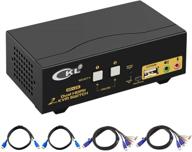
Enhance Productivity with CKL HDMI KVM 2 Port 4K 30Hz Dual Monitor Extended Display (CKL-922HUA)

10 Review
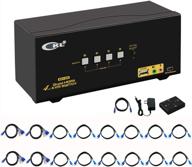
CKL Quad Monitor HDMI KVM Switch 4 Port 4K@30Hz with Cables - Extended and Mirrored Display Support for Windows, Linux, and Mac

11 Review
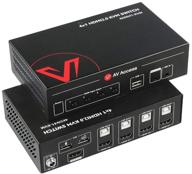
🔌 HDMI 2.0 4 Port KVM Switch with 4K@60Hz, 2K@144Hz,1080P@120Hz Support, 18Gbps Bandwidth, USB 2.0 Keyboard/Mouse/Printer/Monitor/PC Selector, Audio Out/Mic In, HDR10, Dolby Vision, Dolby/DTS, HDCP2.2 Compatibility

10 Review
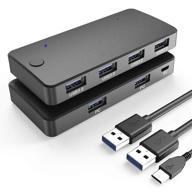
4 Port USB 3.0 Switch Selector - Pubioh KVM Switch for Mouse, Keyboard, Printer, Scanner - 2 in 4 Out Sharing Box with Switch Button and 2 USB 3.0 A to A Cables

11 Review
Another interesting products
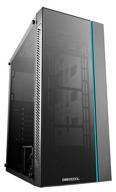
Computer case Deepcool Matrexx 55 black

55 Review
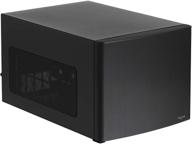
Fractal Design Node 304 - Black - Mini Cube Compact Computer Case - Small Form Factor - Mini ITX – mITX - Enhanced Airflow - Modular Interior - Includes 3x Fractal Design Silent R2 120mm Fans - USB 3.0

42 Review

Computer case be quiet! Pure Base 500 black

32 Review
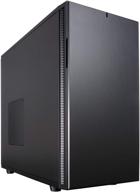
Fractal Design Define R5 - ATX Mid Tower Computer Case - High Airflow and Silent Optimized - Includes 2x Dynamix GP-14 140mm Silent Fans - Water-Cooling Ready - Black

43 Review

